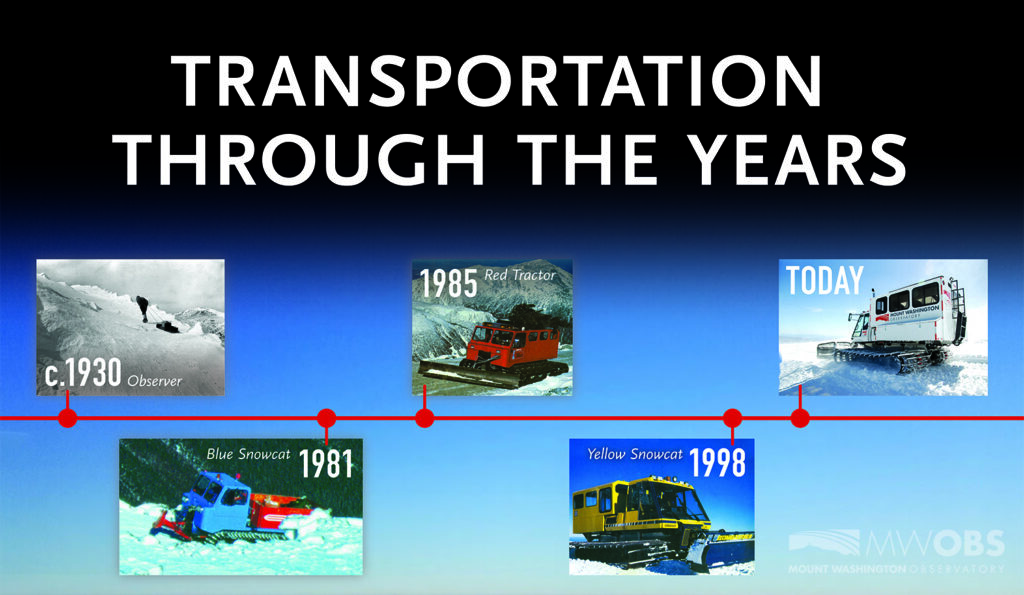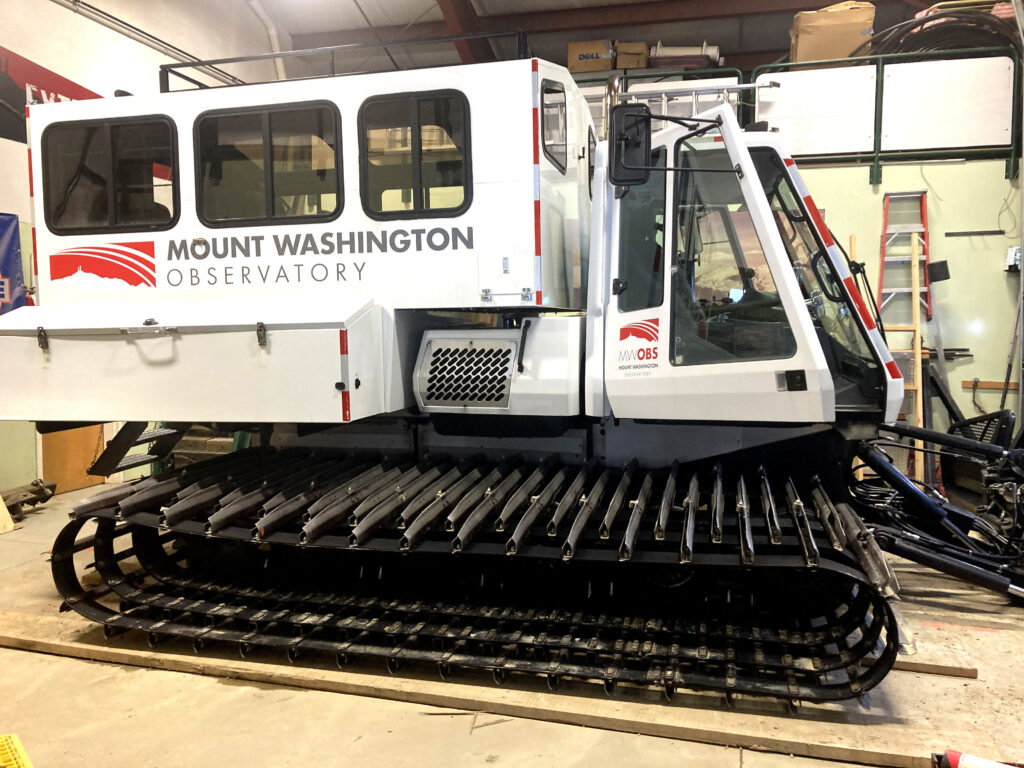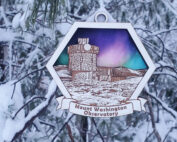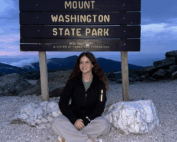Bringing Supplies to Mt. Washington’s Summit
By Jamie Boss
It’s one thing to operate a weather observatory on top of Mount Washington in the worst weather in the world and another to provide a constant supply of personnel and supplies to the summit every week. On a good day, provided no plowing would be needed from the snowcat, it might take an hour and a half to reach the summit via the 8-mile auto road. Drifting snow can add another hour and a half to the summit trip. There are days when the weather is so inclement that the snowcat is forced to turn back. The history of supplying the summit crew with replacements and supplies goes back almost 90 years. Recognizing that backpacking supplies up the mountain in dangerous weather was inefficient, they first tried sled dogs.

By 1947, attempts by early state-owned Tucker Snowcats to climb Mount Washington’s auto road were noted in New Hampshire newspapers. Tucker invented the name “Snowcat.” Tucker machines had four tracked sponsons instead of wheels. Steering was through a simple steering wheel. Eventually, WMTW television chose the Tucker as their “Snowcat of choice” to bring supplies to the top. Additional supplies were often pulled behind the Snowcat on a sled.
The Army’s M29 Weasel, first used during World War Two, was not far behind the Tucker Snowcat. The Weasel incorporated two tracks, and steering was accomplished through two steering laterals, each stopping a track. When the left steering lateral was pulled back, it stopped the left track, and the right track would power the machine to the left. The storage space within the cab was minimal, and there was barely enough room for two passengers. While the Weasel wasn’t popular traveling to the summit, the Forest Service and AMC utilized the hardy vehicle to bring supplies up the fire trail to the Tuckerman Ravine buildings in the winter for many years.
In the 1960s, Thiokol machines began to be used on Mount Washington. Having a larger cab, wider tracks for deep snow, and the ability to carry a plow made the trip up the auto road safer. Today, you can find one of the Thiokol “Sprytes” used on Mount Washington on display in the Obs Administration building parking lot in North Conway.
Navigating the auto road in the winter is accomplished by the driver watching for simple uphill edge markers made from branches. This enables the operator to keep the vehicle on the correct track, traveling up and down the mountain. In many spots along the road, the Snowcat can come perilously close to the downhill edge, making the marker “sticks” worth their weight in gold.
Today’s Bombardier Snowcat is a marvel. Equipped with a formidable plowing system, it can safely transport up to ten passengers up the mountain, along with a week’s worth of food and supplies. It costs well over $100,000 and has its own storage and repair facility at the beginning of the auto road. The machine requires regular maintenance, including replacing individual track sections damaged from the many trips up the mountain. The Bombardier Snowcat is the lifeline for the summit crew and visitors. It is the only way to safely travel up and down the auto road in the winter.

Photo: Jamie Boss
With all its sophistication, the Snowcat is often forced to retreat when facing extreme weather. There have been rare times when whiteouts caused the operator and passengers to stay overnight in the vehicle when only part way down. In extreme emergencies, having a helicopter medical evacuation in the winter is rarely possible. Extreme temperatures, challenging wind gusts, and cloudy conditions make it impossible to land on the summit safely. The Snowcats are the only safe way up and down the mountain.
About the Author:
2025 Holiday Gift Guide
2025 Holiday Gift Guide By Brandi Malloy There’s something magical about Mount Washington, especially during this time of year. Thanks to our online store, you can bring a little piece of that magic home—
Inside the Weather Room: How Mount Washington Observers Monitor the Atmosphere
Inside the Weather Room: How Mount Washington Observers Monitor the Atmosphere By Karl Philippoff As a weather observer on Mount Washington, we take our hourly observations on the observation deck, usually heading out between
From Weather Observer to Intern, to Observer Again
From Weather Observer to Intern, to Observer Again By Madelynn Smith As I rode in the backseat of our Obs van up the Auto Road for the first time as a full-time employee at




